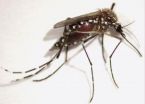Doctors have been treating the symptoms of menopause with hormone therapy for decades. During menopause, the ovaries decrease their estrogen production, and women experience symptoms to varying degrees; for some, symptoms are non-existent while for others they are debilitating. In the United States last year, formulations of estrogen and progestin hormones helped more than 6 million women who had symptoms such as hot flashes, sleep disturbance and irritability.
Still, there are risks. In 2002, a large, placebo-controlled clinical trial by the Women's Health Initiative — which tested the higher-dose, oral estrogen-plus-progestin therapy — was halted because of the increased incidence of breast cancer and cardiovascular disease in women taking the hormones. The results contradicted the clinical wisdom of the time: that hormone therapy could help protect against heart disease. Since that trial, there has been evidence indicating that a lower dose of hormones can treat menopausal symptoms just as effectively in many women with minimal side effects — and "may incur lower risks of breast cancer and cardiovascular disease," said Sandra Tsai, MD, MPH, clinical instructor of medicine and lead author of the new study.
The latest findings from Stanford researchers show that as of 2009, physicians' practices weren't keeping up with this clinical evidence about lower hormone doses, which the U.S. Food and Drug Administration recommends. "We're disappointed," said the paper's senior author Randall Stafford, MD, PhD, associate professor of medicine at the Stanford Prevention Research Center. "Yes, there was an increase in the use of low-dose preparations, but it was not sizeable."
To conduct the study, the researchers analyzed survey data collected from physicians between 2001 and 2009 by the IMS National Disease and Therapeutic Index (a commercial data source from IMS Health Inc.). The database reflects prescriptions that are issued as a result of outpatient visits to physician offices.
While the Stanford researchers found that the use of lower-dose therapy did increase between 2001 and 2009, it was not nearly enough to suggest that physicians were fully incorporating the new evidence into everyday practice. About two-thirds of women with menopausal symptoms are likely to respond to low-dose therapy, Stafford said, so he and his colleagues were surprised that not even one-third of the women taking hormone therapy in 2009 were on a low dose.
That's a marked contrast to the response to the 2002 trial findings. After those initial results were publicized, the number of women with prescriptions for the higher-dose menopausal hormone therapy declined sharply — it fell by 47 percent between 2001 and 2004, according to the Stanford study. "This is our best example of clinical trial findings dramatically changing practice," said Stafford. The new study also showed that the decline continued, albeit much more gradually, between 2004 and 2009.
In addition to the research on the effects of low-dose hormone therapy, recent studies have also established that delivering hormones through the skin with a small patch, called transdermal delivery, reduces risk of serious health problems such as blood clots. Because of that, the Stanford team had expected more of the women on hormone therapy would be using transdermal hormones in 2009 than in 2001. But the data showed no meaningful change at all. "We thought that over time there might be greater tailoring of therapy based on characteristics of the individual woman," said Stafford. "The bottom line is that over time we didn't see the level of refinement in clinical practice that we expected."
Stafford and his colleagues had also expected that for women who needed treatment for menopausal symptoms, physicians would start prescribing hormone therapy during or just after menopause more often. The data, however, showed that in 2009, like in 2001, the preponderance of women on the drugs were older, and thus at greater risk for adverse effects.
The study reached no definite conclusions about why clinical practice has not caught up with research findings. Perhaps physicians made adjustments after the 2002 trial, and that "clinical inertia" led them to maintain their prescribing practices since that time, the study said. It's possible that older women who have been on hormone therapy for many years are satisfied with their results, don't want to risk recurring symptoms and don't realize that the risks of breast cancer and heart disease increase with age, Stafford suggested. Maybe doctors who are familiar with the immediate benefits of higher-dose hormone therapy in relieving menopausal symptoms are reluctant to change, said Tsai.
"It takes too long to disseminate research into practice," Tsai added. "It helps when findings are presented in the media and when physicians discuss findings with their patients." She suggested that cooperation between research institutions, drug companies and professional societies could help produce consistent clinical guidelines and find the best ways to disseminate the information to both physicians and patients. "There needs to be a lot of collaboration to make this work."
"It takes a huge event to change clinical practice," Stafford said. "We haven't had that big, well-controlled clinical trial hitting the front page of the newspapers, demonstrating that the risks of standard-dose estrogen and progestin therapies are potentially much higher than at lower doses."
###
The other co-author of this study is Marcia Stefanick, MD, PhD, professor of medicine at the Stanford Prevention Research Center. The study was funded by grants from the National Heart, Lung, and Blood Institute.
Information about Stanford's Department of Medicine, which also supported the research, is available at http://medicine.stanford.edu/.
The Stanford University School of Medicine consistently ranks among the nation's top medical schools, integrating research, medical education, patient care and community service. For more news about the school, please visit http://mednews.stanford.edu. The medical school is part of Stanford Medicine, which includes Stanford Hospital & Clinics and Lucile Packard Children's Hospital. For information about all three, please visit http://stanfordmedicine.org/about/news.html.
PRINT MEDIA CONTACT: Susan Ipaktchian at (650) 725-5375 (susani@stanford.edu)
BROADCAST MEDIA CONTACT: M.A. Malone at (650) 723-6912 (mamalone@stanford.edu)
END


